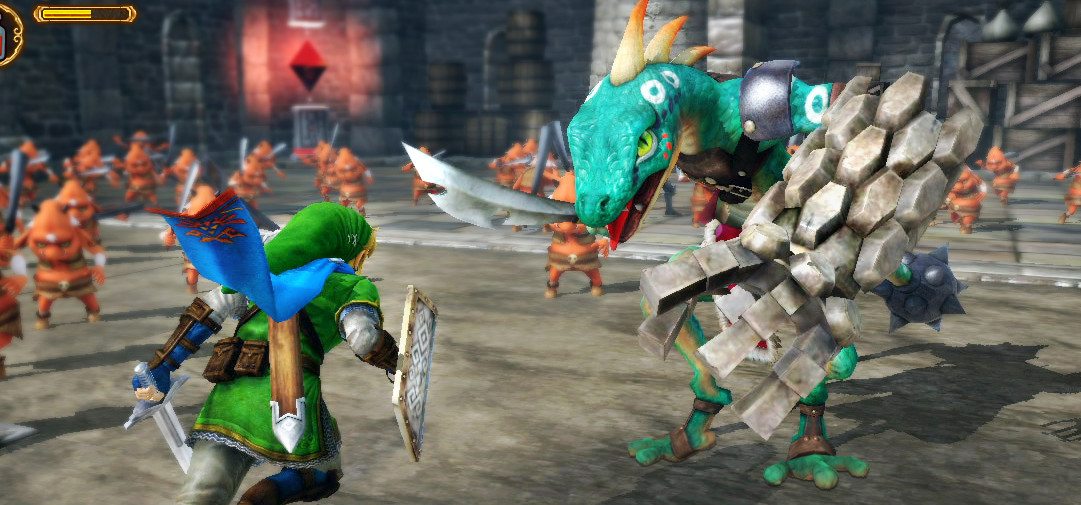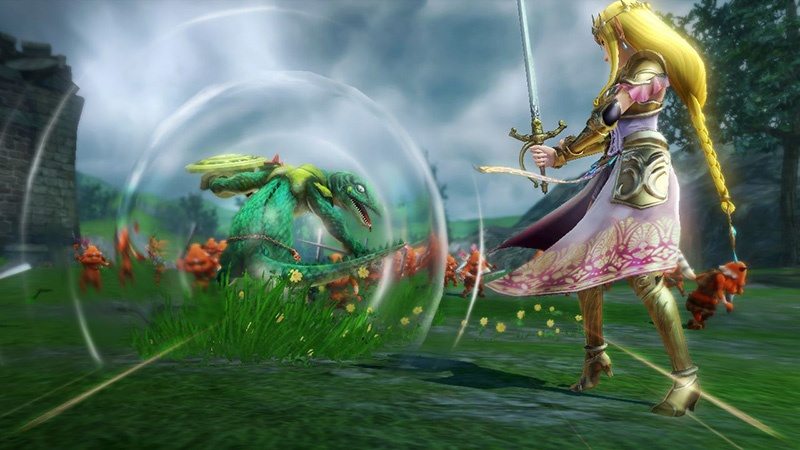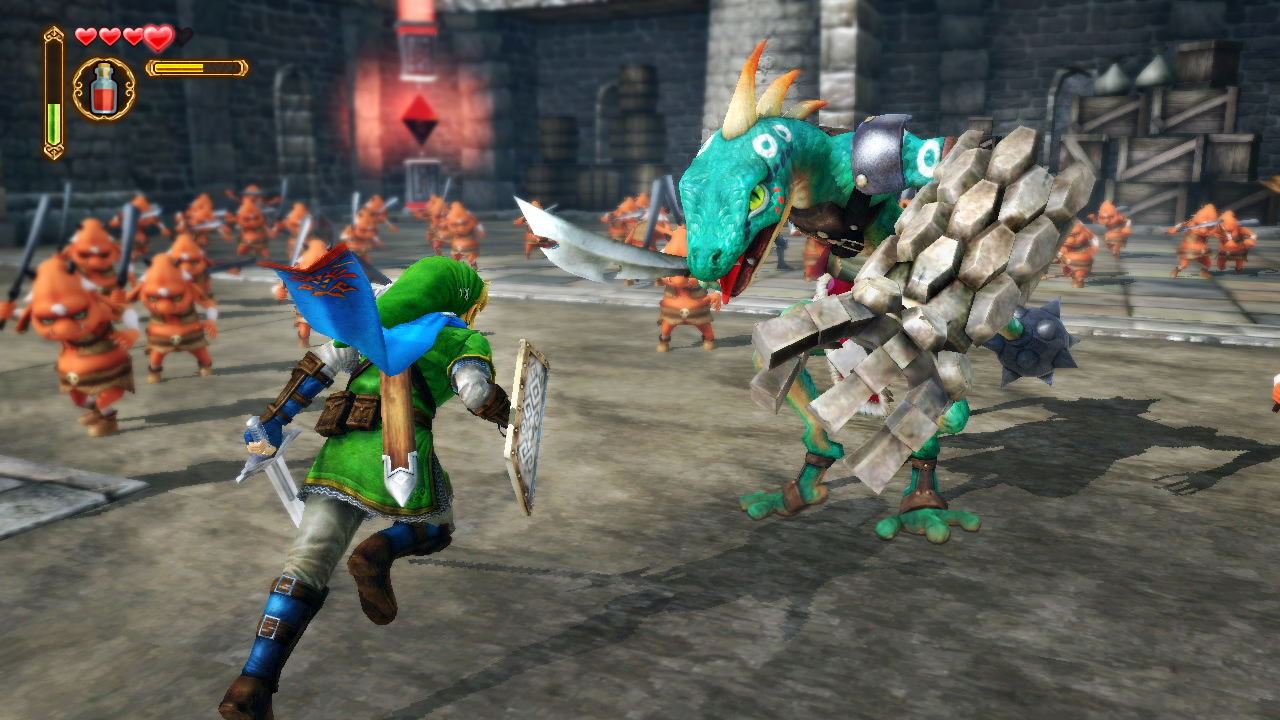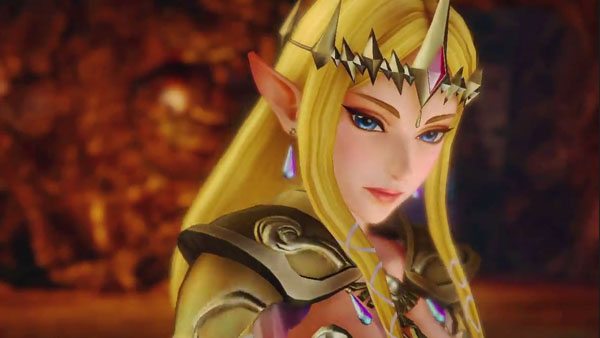Review: Hyrule Warriors
I would have loved to play Hyrule Warriors when I was 12. It’s a Zelda game with a more realistic art style, an emphasis on combat and pre-rendered full motion video cut scenes just like in Final Fantasy!
But Hyrule Warriors is not a Zelda game, and nor is it Final Fantasy. A collaboration between Nintendo and Koei Tecmo, the game is co-developed by Team Ninja and Omega Force and is a crossover between The Legend of Zelda and the latter developer’s Dynasty Warriors series. Out is the exploration and puzzles that define Zelda and in is the hack and- slash crowd-combat action of Dynasty Warriors; it’s merely set in the Zelda universe, and thus the title Hyrule Warriors is very apt.
It’s clear that Hyrule Warriors is not a Nintendo-developed game as soon as the first level begins; there is no overlong tutorial. Thankfully, the controls are simple to grasp, with Y and X delivering light and heavy attacks and combined to unleash various combo attacks. The B button dodges whilst ZL defends; the L button initiates Zelda’s staple lock-on feature for more powerful enemies; A and R unleash Special Attacks and ‘Focus Energy’ – enabled by filling the magic meter – respectively.
With controls as simple as these, Hyrule Warriors is a far cry from the likes of Devil May Cry and Bayonetta, and it is due in part to the simplicity of the combat that the Dynasty Warriors series is frequently criticised for being repetitive: you slash and slice your way through literally thousands of enemies (often reaching over 2000 in a 30 minute level) – wash, rinse, repeat. Yet as any Dynasty Warriors fan is likely to tell you, that’s not really the point. Yes, there are more difficult enemies that force you to change your battle techniques, but combat is not the main focus of the game: it’s more of a light-strategy/action game, unsurprising as Dynasty Warriors is a spin-off of the tactical series Romance of the Three Kingdoms.
Throughout the campaign, or ‘Legend Mode,’ of Hyrule Warriors, the key to victory is capturing the enemy’s keeps to stop the flow of reinforcements. Furthermore, enemies will attack your keeps, and if your base falls it’s game over. The map of the battlefield at the top right corner becomes your best friend as you mark the movements of the enemy and your own troops. It may be tempting to slash through a hundred grunts in your way, but it’s all about picking and choosing your battles, defeating the more difficult enemies, and trying to capture keeps as fast as possible.
It’s a testament to how effectively stressful Hyrule Warriors is that I often felt on the brink of defeat; nothing induces panic like the alert that one of your captains is about to be defeated by a powerful enemy on the outskirts of your base. Rushing across the battlefield to their aid, inside your head screams: “Will I have time!?”, only to arrive at the last moment to deliver a flashy and fatal blow to the enemy onslaught. Hyrule Warriors is all about making the player feel empowered, an unstoppable force on the battlefield, a hero.
There are some light RPG elements to augment your Hyrulian heroes, from typical level-ups and equipment management to skill trees progressed through by using materials. These materials are not the only things found on the battlefield: one can also discover hidden Heart Pieces, carried over from the Zelda series. The way many of these are obtained is through the use of items – also brought over from Zelda – although the selection is very limited: bombs, bow, boomerang, hookshot. That’s it. Items are cycled through with the D-Pad or Gamepad’s screen and used with the ZR button, but combat applications are minimal and thus items are relegated to being primarily used for occasional exploration and to defeat the too-oft repeated bosses, as is Zelda tradition.
Whilst the typical gameplay of capturing keeps could be deemed repetitive, as the combat often is, Hyrule Warriors remedies this with its ‘Adventure Mode’. Taking the overworld map of the original Legend of Zelda as a map screen, each square offers a challenge, such as defeating a particular enemy or defeating a horde within a time limit. These challenges often pose greater difficulty than “Legend Mode”, but players are rewarded with more powerful weapons and additional characters.
Like Dissidia: Final Fantasy and Nintendo’s own Smash Bros. series, Hyrule Warriors’ appeal is largely rooted in fan-service, in its rapt reverence for the series that defined action-adventure. Being able to play as a variety of characters from the Zelda series – all of whom handle and play different, adding further variety – is only the first and most rudimentary way in which Hyrule Warriors achieves this; everything from the music – primarily empowering rock arrangements of classic Zelda tunes – to the powered-up hook-shot pulling down the moon from Majora’s Mask helps compose this high-def digital love-letter to Zelda.
However, my chief problem with Hyrule Warriors is that I want more: more large bosses (there’s only six), more stages (there’s only thirteen), more variation in enemies and troops (where are the Zoras?), and more playable characters (Vaati, anyone?). The game focuses on the worlds of Ocarina of Time, Twilight Princess and Skyward Sword, and whilst this focus is understandable due to the similarities in the more realistic art styles of these games and Dynasty Warriors, it is still disappointing as many entries in the almost 30-year-old franchise get short-changed if not entirely forgotten.
Hyrule Warriors is not the visual powerhouse for the Wii U the way Mario Kart 8 was earlier this year, but still looks great. Character models in particular are finely detailed and well animated, particularly during the often-spectacular and always-flashy attack animations. Less impressive are the environments themselves; while each stage is distinctive, the ground is often overly flat with textures repeated over large portions of it. Thankfully, with hundreds of enemies almost always on screen, this rarely becomes distracting and is a worthwhile compromise most likely made for impressive looking characters and battle effects. Less forgivable, however, is the Zelda series continuing to eschew voice-acting. What makes it even more egregious this time is that Hyrule Warriors does have a fully-voiced narrator, yet during battles (when voice-acting could be helpful) and the cutscenes (where voice-acting’s replacement, 80’s – sounding text-scrolling noises, is particularly out-of-place), voice acting is absent.
After playing Hyrule Warriors, I often asked myself whether I would have enjoyed the game as much if it shed its Zelda skin. The answer I have come to is maybe, but probably no. While I found the minute-to-minute gameplay of Hyrule Warriors tremendously enjoyable, it was the excitement of what Zelda reference I would stumble upon or unlock next that kept me playing – often until my housemates wanted the TV, at which point I changed to the convenient gamepad screen and played even more. Further like Dissidia and Smash Bros., there is a sense of constant progression in Hyrule Warriors that is made all the more addictive by ample amounts of fan-service. Yet I’m still hungry for more; I’m still hungry to fight through battlefields of nostalgia in Zelda worlds somewhat forgotten this time around. But if Dissida and Smash Bros. are any example, it goes to show that there’s always room for a sequel. [divider_top]
Images: Flickr / BagoGames
What do you make of the latest take on Zelda? Tweet @BoarGames




Comments